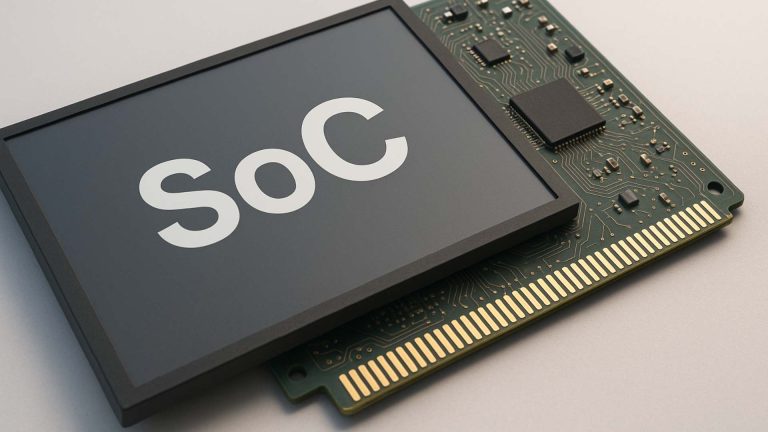Choosing the right digital signage hardware is more than just picking a screen. The hardware and CMS (Content Management System) you choose will determine how scalable, reliable, and effective your signage network becomes—especially in a fast-paced retail environment.
In this guide, we’ll break down the pros and cons of SoC displays, external media players, and open CMS platforms so you can make an informed decision. We’ll also look at how options like Retailr’s Digital Media Player offer a flexible, future-ready solution for retail brands.
1. System-on-Chip (SoC) Displays

SoC (System-on-Chip) displays are commercial-grade screens with built-in processing power and software, eliminating the need for an external media player.
✅ Pros:
- Fewer hardware components (no separate player required)
- Clean installation—less wiring and space
- Lower initial setup cost
❌ Cons:
- Limited processing power for complex or interactive content
- Vendor lock-in: may work only with specific CMS platforms
- Harder to upgrade or troubleshoot hardware issues independently
Best for: Small to medium deployments where simplicity and sleek installs matter more than custom features.
2. External Digital Media Players
External media players connect to commercial screens and handle the processing and playback of content.
✅ Pros:
- More power for advanced content (interactive, real-time data feeds, etc.)
- Easier to troubleshoot and replace without touching the display
- Greater CMS flexibility
❌ Cons:
- Requires more space and wiring
- Slightly higher initial cost
- Needs stable connectivity for remote content updates
✅ Why Retailr’s Digital Media Player Stands Out:
- Optimized for 24/7 retail environments
- Plug-and-play simplicity with robust remote management
- Works with a variety of commercial displays and CMS platforms
- Supports 4K visuals and real-time content sync
Best for: Multi-location retailers, high-traffic stores, or those needing more performance and customization.
3. Open CMS Platforms
Open CMS platforms allow retailers to run their signage network using flexible, often cloud-based software that isn’t tied to one hardware brand.
✅ Pros:
- Freedom to mix hardware vendors (media players, screens)
- Custom workflows, data integrations, and scheduling tools
- Easier to scale as your store network grows
❌ Cons:
- Setup may require more technical knowledge
- Risk of compatibility issues if hardware isn’t properly vetted
- Support may vary depending on the platform
Best for: Brands that want long-term flexibility, multi-location control, and advanced features like AI-driven personalization or data integration.
Which Setup is Right for You?
Factor | SoC Displays | External Media Players | Open CMS Platforms |
Hardware Simplicity | ✅ | ❌ More complex | Depends on setup |
Customization Power | ❌ Limited | ✅ High | ✅ Highest |
Performance for Rich Media | ❌ Basic | ✅ Advanced | ✅ Advanced |
Long-Term Flexibility | ❌ Vendor lock-in | ✅ Flexible | ✅ Most flexible |
Remote Management | ✅ Limited | ✅ Full control | ✅ Depends on CMS |
Final Thoughts
The right digital signage setup depends on your goals, store formats, and scalability plans. While SoC displays may be ideal for quick rollouts, media players—like Retailr’s Digital Media Player—offer more power and flexibility for ambitious retail strategies.
Looking to scale signage across multiple locations without being tied to one ecosystem? Combining an open CMS with a reliable media player gives you the control and adaptability modern retail demands.
Need help designing the right digital signage infrastructure for your retail stores?
👉 Explore Retailr Digital Signage Solutions
